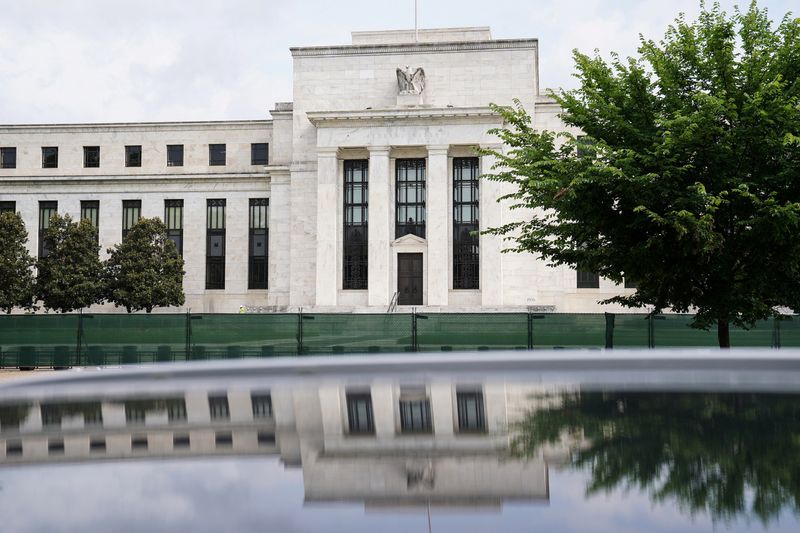China smartphone shipments slumped in June on inventory overhang: Jefferies
Investing.com -- Sooner Federal Reserve rate cuts may not be enough to stop the central bank from falling behind the curve, throwing the economy and the current stock bull market into a wreck.
The risk for the cycle, and richly priced stocks that dominate the S&P 500 index, is "that the neutral rate will fall as the economy softens, causing the Fed to fall behind the curve despite rate cuts commencing this fall," Roth MKM's chief economist and market strategist Michael Darda said in a recent note.
The prospect of a big bump in the economy even as the rate-cutting cycle gets underway wouldn't be unprecedented as the recessions of 1990-1991, 2001 and 2007-2009 "all occurred after policy rates had peaked and began to decline," he added.
The calls for the Fed to lower rates sooner rather than later appear grow by the day. Notable commentators including former New York Fed President Bill Dudley and former chief executive officer of Pimco Mohamed A. El-Erian have recenlty warned that the path for the Fed to deliver a soft landing is narrowing.
"The facts have changed, so I’ve changed my mind. The Fed should cut, preferably at next week’s policy-making meeting," Dudley said in a Bloomberg op-ed piece ahead of the Fed's July 30-31 policy meeting.
Darda, however, believes U.S. economy has already been a soft landing over the past year as economic growth is running close to potential, inflation is falling to target and stocks are boasting lofty valuation. Like every cycle, this above-trend growth seen over the period tends to slow to trend and eventually below trend, or recession.
The risk, he adds, is that if Fed rate-cutting regime doesn't keep up with the pace of slowing in the economy and the neutral, then the economy may miss the soft landing and fall into recession.
The risk is that if "growth slows in a way that puts downward pressure on the neutral policy rate, and the Fed lags that downward pressure, a recession will ensue," Darda said, though added that his base case isn't for Fed to repeat past policy of delaying action.
Still, the threat of a multi-year period of weakness in the stocks and sectors that have dominated S&P 500 equity returns cannot be ruled, Darda warned.
